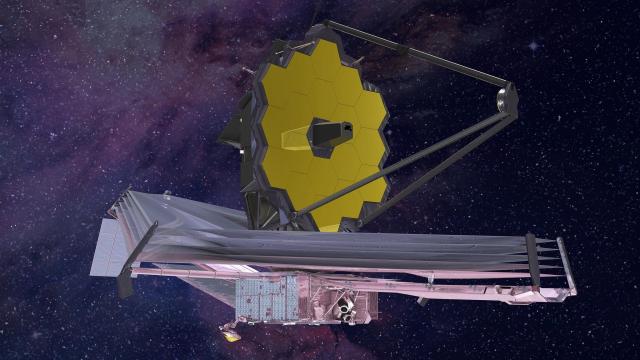A major milestone has been achieved in the deployment of the James Webb Space Telescope, with an onboard instrument detecting its first photons from a distant star. This means engineers can now begin the three-month process of aligning the space telescope’s 18 mirrors.
After years of delays and a seemingly endless succession of hiccups during development, the $US10 ($14) billion Webb mission — now in its seventh week — has been smooth as silk. The painstaking process of unfolding the space telescope and getting it ready to perform groundbreaking astronomy has been progressing about as well as anyone could’ve hoped, the most recent achievement being the telescope’s first detection of starlight, which happened earlier this week.

“This milestone marks the first of many steps to capture images that are at first unfocused and use them to slowly fine-tune the telescope,” NASA said in a statement announcing the accomplishment on Thursday. “This is the very beginning of the process, but so far the initial results match expectations and simulations.”
This inaugural batch of photons was detected by Webb’s Near Infrared Camera (NIRCam) instrument. The photons came from HD 84406, a star located nearly 260 light-years away and visible in the Ursa Major constellation. With this starlight detected, the team can now begin the three-month process of positioning all 18 panels such that they’ll form a single concave mirror.
Launched on December 25, 2021, the Webb space telescope is a collaboration between NASA, ESA, and the Canadian Space Agency. Once operational, Webb will search for light from the first stars and galaxies, study the formation and evolution of galaxies, and scan the atmospheres of distant exoplanets, among other astronomical and astrobiological goals.
Webb reached its stable orbital spot, Lagrange Point 2, on January 24, 2022. Since that time, engineers have finished powering on its science instruments and turned off its heaters, which they did to kickstart a protracted cooling down process. The heaters were required to keep Webb’s optics warm and to prevent the condensation of water and ice. The alignment process was able to begin once the instrument reached -153 degrees Celsius, according to NASA.
The alignment process will involve seven different steps, such as segment image identification, segment alignment, and image stacking. Full details of these steps can be found here. But as NASA explains, this job will require extraordinary precision:
To work together as a single mirror, the telescope’s 18 primary mirror segments need to match each other to a fraction of a wavelength of light – approximately 50 nanometres. To put this in perspective, if the Webb primary mirror were the size of the United States, each segment would be the size of Texas, and the team would need to line the height of those Texas-sized segments up with each other to an accuracy of about 1.5 inches.
Engineers will use the data gathered by NIRCam to gradually align the telescope. As the large mirror is not yet aligned, the incoming photons produced an image showing 18 blurry dots of light. The team will keep Webb trained on HD 84406 and work towards producing a single focused image of the star. NASA cautions that the images gathered throughout this three-month process will be strictly utilitarian in nature and not “pretty,” and also a pale comparison to what we can expect this coming summer.
The end of this process will see a fully aligned telescope and the beginning of the next phase: instrument commissioning. Fingers are crossed that these next important steps will go as planned and that we’ll see spectacular results as early as June.
